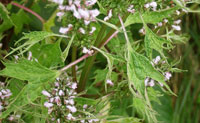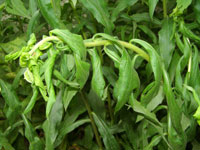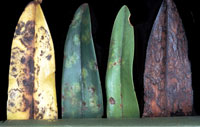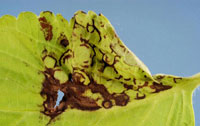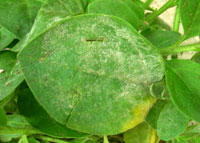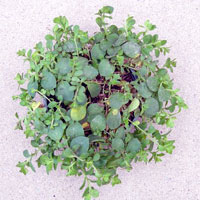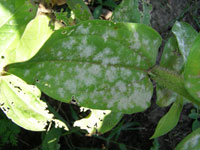Extension > Garden > Diagnose a problem > What's wrong with my plant? > Annuals and Perennials > Petunia > Malformed, cupped or distorted leaves
Petunia > Leaves > Malformed, cupped or distorted leaves
1 of 4
Plant growth regulator herbicide injury
(2, 4-D, Dicamba, etc.)
- Leaves are twisted, cupped, or distorted
- Leaves may appear thick and leathery
- Veins in leaves are thick and close together
- Side of the plant closest to the herbicide application is most severely affected
- Different species of plants in spray area will show similar symptoms
- More information on herbicide injury
2 of 4
Tobacco Mosaic Virus (TMV)
- Symptoms may vary depending on cultivar, age of plant and other factors
- Leaves have a mosaic pattern of light and dark green
- Leaves may be distorted, curled or twisted upward
- Lab test needed to identify which virus is causing the problem
- More information on TMV
3 of 4
Impatiens Necrotic Spot Virus (INSV) or Tomato Spotted Wilt Virus (TSWV)
- Symptoms may vary depending on cultivar, age of plant and other factors
- Brown to black ring spots or flecks on leaves
- Plants may be stunted and have distorted leaves
- Severely infected young plants may turn brown and die
- Lab test needed to identify which virus is causing the problem
- More information on INSV and TSWV
4 of 4
Powdery Mildew
Oidium sp.
- Powdery, fluffy white spots or blotches on leaves, stems, and flower parts
- Tiny black round spheres may be visible within white spots late in the season
- Spots typically start on lower leaves but can spread to cover the entire plant
- Severely infected leaves may be completely covered in white or grayish white fungi
- In some cases, leaves become curled or twisted or turn yellow due to the infection
- More information on Powdery Mildew



